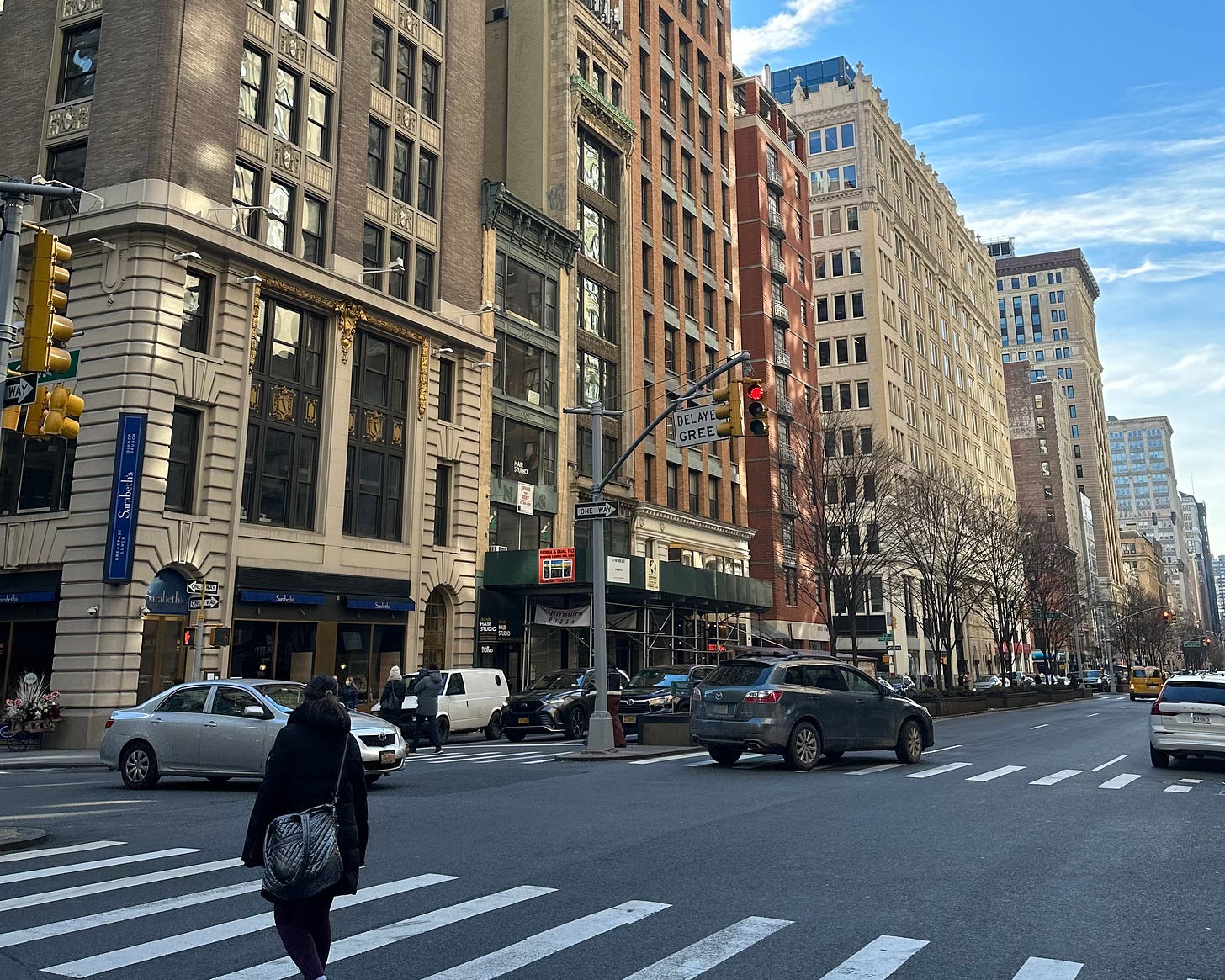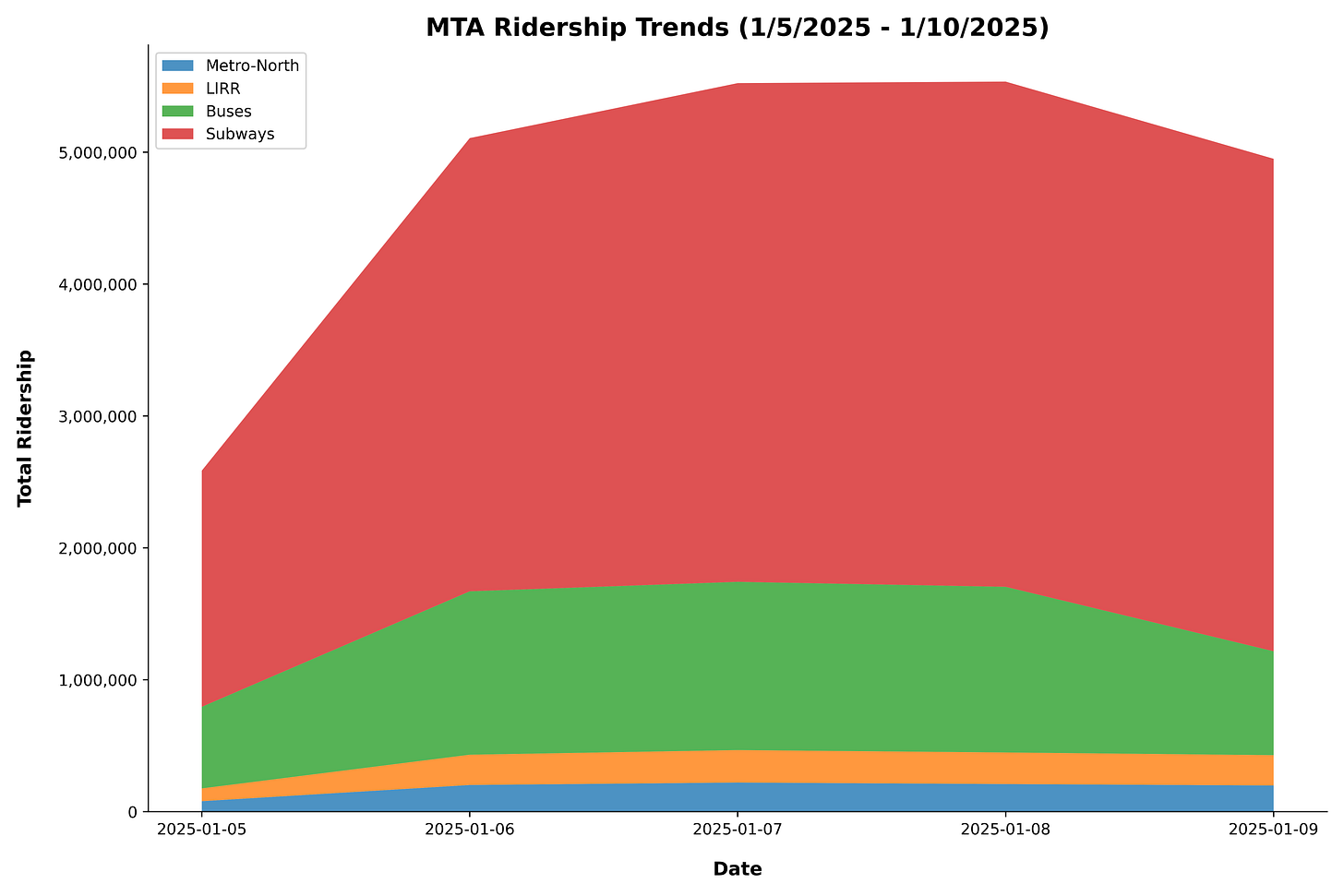Winners and Losers: Congestion Pricing in NYC, One Week In
From safer streets and smoother commutes to economic strains and parking wars, New York's congestion pricing is already causing seismic changes for New Yorkers.
New York City's historic congestion pricing plan, launched on January 5, 2025, quickly became a lightning rod for debate. A week into the program, the impacts are already being felt across the city, with clear winners and losers emerging in the early days of this transportation revolution.
Winner: Manhattan Drivers (Who Can Afford It)
For those who can absorb the shock, the benefits are undeniable.
According to early estimates, traffic volume in the congestion zone has dropped by 15–20%. Previously clogged streets like Broadway, Fifth Avenue and Canal Street are now flowing more freely and quietly, showing a stark contrast to the typical gridlock that once defined Manhattan.
For more affluent residents, the congestion fee barely registers as an inconvenience. Many of them have welcomed the relief from gridlock, with some reporting up to 30% shorter travel times during peak hours. The toll is just a small price to pay for quicker and less stressful travel.
Loser: Low-Income Commuters
Working-class New Yorkers with limited access to public transit are bearing the brunt of the toll.
The Congestion Relief program offers a 50% discount after the 10th trip in a calendar month for individuals earning under $50,000 annually. Many commuters argue that this measure is insufficient to alleviate the economic strain.
Critics highlight that existing public transportation options may not adequately serve all low-income commuters. Concerns about safety, reliability and accessibility of the subway and bus systems persist, making the shift from personal vehicles to public transit challenging for some individuals.
Winner: The MTA and Public Transit
Public transit ridership has surged as commuters ditch their cars to avoid the toll.
The Metropolitan Transportation Authority (MTA) is reporting higher revenue and ridership since the toll was implemented. Subway ridership has increased by 10%, or approximately 3.2 million riders. Similarly, the Long Island Rail Road and Metro-North have experienced ridership increases of 14% and 15%, respectively.
The MTA is still facing criticism for not adequately preparing for the increased demand. This influx of riders has led to overcrowded conditions, with passengers reportedly being pressed against one another and some unable to board trains due to capacity issues.
Loser: Rideshare Drivers
Rideshare drivers, many of whom are from low-income backgrounds, are experiencing compounded financial pressures.
Uber adjusted its compensation structure for drivers on trips between New Jersey and New York, citing increased operational costs due to congestion pricing. Previously, drivers received a $20 credit for these trips. This has since been reduced significantly to $16.06 during peak hours and $14.06 during off-peak hours.
In addition to reduced driver compensation, Uber has imposed a $1.50 surcharge on customers entering the congestion zone, raising concerns about potential decreases in rider demand, which could further reduce drivers’ earnings. Both Uber and Lyft have historically supported the implementation of congestion pricing.
Winner: Cyclists and Pedestrians
By reducing traffic volumes, congestion pricing could very well lead to improved safety for pedestrians and cyclists.
Prior to congestion pricing, there was a concerning rise in traffic-related fatalities in the city. The first half of 2024 saw the highest number of traffic deaths in nearly a decade, with 61 pedestrians and 12 cyclists killed. This was a 27% increase in pedestrian deaths compared to the same period in the previous year.
It will likely take several months of data collection and analysis to determine the actual impact of the program on traffic accidents and overall safety in New York City. Cities like London and Stockholm have experienced decreases of over 50% in traffic accidents within congestion pricing areas and surrounding regions.
Loser: Some Upper Manhattan and Outer Borough Residents
In neighborhoods outside of the congestion zone, streets have transformed into new battlegrounds.
Drivers seeking to avoid the congestion toll are leaving their vehicles just outside the fee zone, exacerbating parking shortages and igniting tensions among residents. Residents of these areas have reported extended searches for parking spots and increased tensions, including physical altercations over spaces.
Areas including Queens, the South Bronx, and parts of Brooklyn have braced for more traffic congestion and pollution as commuters circumvent the toll using local streets. Residents and officials from these regions have long argued that congestion pricing disproportionately benefits Manhattan at the expense of surrounding areas.
The rollout of congestion pricing has highlighted the deep complexities and inequalities in New York City. With billions of dollars at stake, congestion pricing has the potential to reshape the city’s future, but its success will depend on how well it balances the needs of all its residents.



